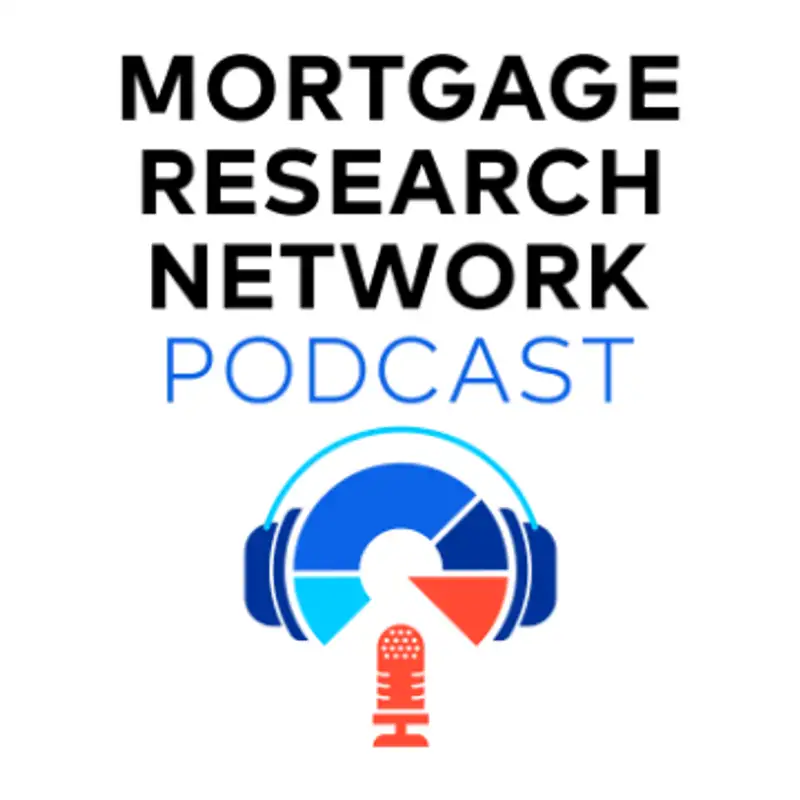2026 Loan Limits: Will Conforming Loans Top $842K?
Welcome to the Mortgage Research Network Podcast. Just a note that this podcast audio is AI-generated but based on content that was produced by people. And your hosts, Tim and Craig, are real. Without further ado, let's get into today's topic.
I'm your host, Tim Lucas, editor of MortgageResearch.com and a former mortgage professional, and with me is Craig Berry, a mortgage originator with 25 years experience. Craig, I crunched the numbers and based on today's home prices, conventional loan limits could jump nearly 4.5% in 2026, pushing them over $842,000. For those of you who aren't familiar with Fannie Mae and Freddie Mac loan limits, they are simply the maximum loan amount they will accept under their rules. Anything bigger must go somewhere else, like a private jumbo loan lender.
And conventional or conforming loans, as they are called, often come with easier underwriting requirements.
Right. And what's interesting is that this would be one of the smallest increases we've seen in years.
How does this compare to what we've seen historically?
Let me paint you a picture. back in 2022, we saw an absolutely massive 18% increase. Then 2023 followed with a 12.2% jump. So this projected 4.46% for 2026 feels almost conservative in comparison.
That's quite a shift in momentum. What's driving these changes?
It all comes down to the Federal Housing Finance Agency's House Price Index or HPI. They track home price changes between quarters to set these limits. For example, they compared Q3 2023 to Q3 2024 prices to determine the 2025 limits.
So how are we already making predictions for 2026?
Well, that's where it gets interesting. Since we don't have Q2 or Q3 2025 data yet, we used first-quarter numbers as an early indicator. Keep in mind the FHFA hasn't made any predictions yet, but We took it on ourselves to do just that. The HPI moved up 4.46% in Q1 from a year earlier, which gives us that estimate.
You know what really catches my attention? The high-cost area limits.
Oh yeah - those are set at 150% of standard limits. So we're looking at potential high-cost limits over $1.2 million for single-unit properties in 2026. And for four-unit properties in high-cost areas, we're approaching $2.4 million!
That's a lot of zeros. Should buyers actually wait for these higher limits though?
Here's the thing. waiting could be risky. Home prices keep climbing despite high interest rates. If you wait until 2026, you might end up paying significantly more for the same house.
Well then, what alternatives do buyers have right now?
There's actually a pretty clever strategy gaining traction. combining a conventional loan with a HELOC. Picture this: you're buying a million-dollar home with $100,000 down. You take out a conventional loan at the current limit of $806,500, then use a HELOC for the remaining $93,500 gap.
That's quite strategic. Any other options worth considering?
Absolutely - jumbo loans are becoming more competitive, and some lenders offer portfolio loans with surprisingly good terms. Plus, here's something fascinating - back in 2015, the conventional limit was stuck at four hundred seventeen thousand dollars. That's less than half of what we're projecting for 2026!
Speaking of changes, how has this affected first-time homebuyers?
That's where we've seen some really positive shifts. Conventional loans now allow down payments as low as 3%, with a minimum credit score of 620. They've actually become a popular alternative to FHA loans for many first-time buyers because of cancelable mortgage insurance.
What about regional variations in these limits?
That's crucial to understand - there are hundreds of counties designated as high-cost areas where limits are significantly higher. In parts of California, New York, and Hawaii, we're already seeing limits well over a million dollars.
A standard conventional loan over $1 million. I don't think I would have believed the day would ever come when I first started in the business. So when exactly can buyers take advantage of new limits?
Most lenders start accepting the new limits as soon as they're announced, typically in late November of the previous year. Some even start processing applications based on new limits before they're officially implemented.
The housing market never stops evolving, does it?
No, it certainly doesn't. And that's exactly why staying informed about these changes is so crucial. Whether you're a first-time buyer or looking to upgrade, understanding these loan limit changes could mean the difference between getting your dream home or missing out entirely.
That's about all the time we have for this topic, but we go into even more detail on the site. To learn more, go to Mortgage research.com and type 2026 loan limits in the search bar. We'll see you next time on the Mortgage Research Network Podcast.
